An alarming phone call last Saturday at 4am began a five-day battle against a raging fire for Seamus Hassett, ecologist and regional manager of Killarney National Park.
Herculean efforts by Mr Hassett, his team, the fire service, the Air Corps, and many volunteers followed for the next 90-plus hours as they worked to quench the flames burning through the oldest national park in Ireland.
Fire began to rip through the Unesco biosphere reserve from Friday night, slashing deep, black scars across the ancient park with its wild red deer population that has a lineage stretching back to neolithic times.
Parts of the park were still softly smouldering on Thursday. Peat bogs were burning below the ground, releasing once trapped carbon and potentially damaging a delicate and complex ecosystem so thoroughly that it may never again be what it was just eight days ago.
By the end of the week, Mr Hassett was working with gardaí to determine the cause and seat of the fire, examining blackened heath and woodland and still smouldering earth.
“We’re still working with the Garda technical bureau, their investigations are on site again today,” Mr Hassett said. “We can’t determine what started it at the moment.
“We can’t say it’s malicious, it may have been an accident, but it’s unlikely to be a natural event.”
The damage is extensive with at least 23sq km either partly or wholly burned.
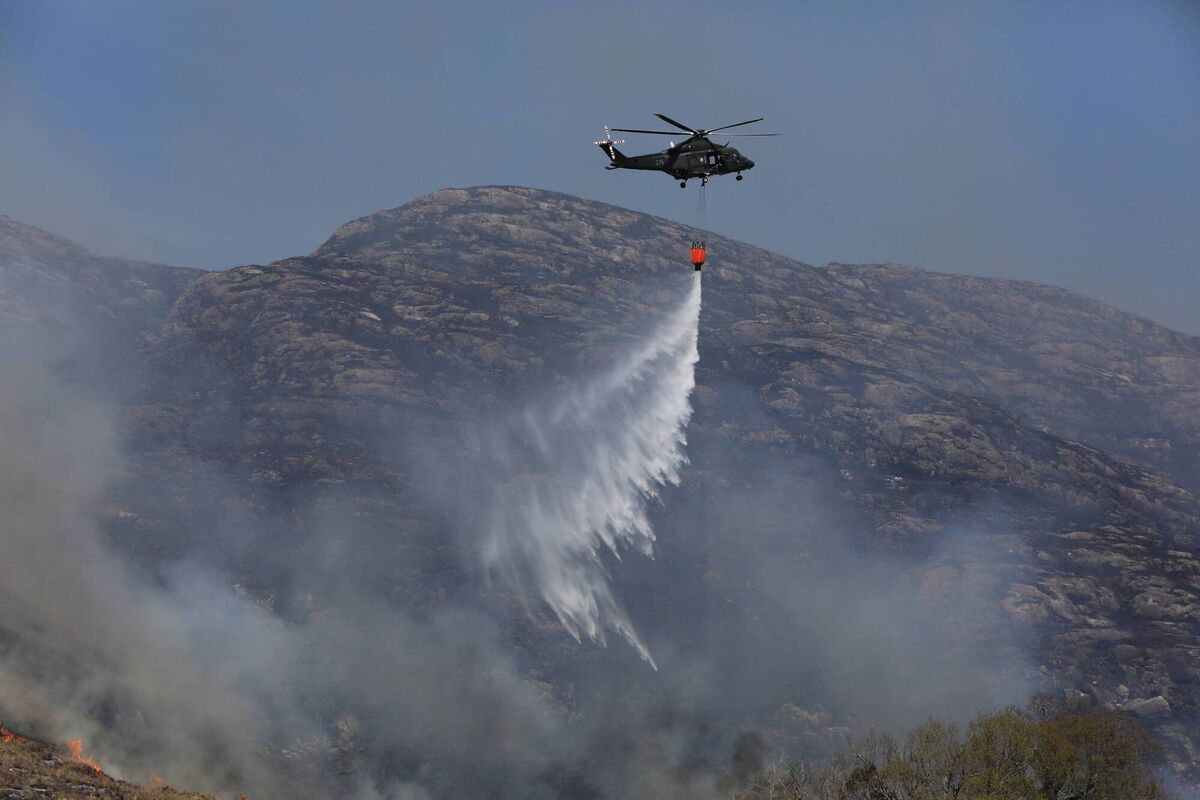
Although Mr Hasset and his team are still surveying and assessing the damage, he said it may take 15-20 years for the park to fully recover.
“Conservatively, the figures quoted of 2,500 to 3,000 hectares [of fire damage] is not far off at the moment, but that includes some private land and the park,” he said.
“But it is still too early to know the full extent of the damage.”
A range of habitats have been impacted, including wet heath, dry heath, alpine boreal heath, blanket bog, and oak woodlands, he said.
The lakes and waterways will also be impacted.
“A fire of this scale is going to lead to run-off and the burned ash will lead to a carbon spike in water,” he said.
“From an ecological perspective, we have the freshwater pearl mussel, the longest living mollusc, the longest living animal in Ireland, they can live up to 120 years.
“They demand the highest water quality and anything that would have an impact on that quality would have an impact on the species that are sensitive to water chemistry. The fire is more than terrestrial. People look at it now and the scar is visually striking but the longer-term impact is going to be very hard to assess in the initial stages.
“You’re in the middle of the bird nesting season. So it’s going to have an impact on the likes of snow chaffs, meadow pips, skylarks, potentially merlins.
“There’s a huge amount of survey work to be done which is very time-consuming, you need boots on the ground. We’ll start looking at the likes of the invertebrates in the next few weeks. Bugs, beetles, particularly in certain habitats, can be key indicator species, they can tell you about the health of the system.
“We have found from previously burned sites, that the species composition, particularly on the peatland, the heather species take so much longer to recover. And deep fire, bad fire, may need to recover from seed which can take up to six years to get any type of growth.
“So the longer-term impacts we’ll monitor scientifically, but the recovery will depend on the severity of the damage of the fire, how quickly it went through and what temperature it burned.
“Some of the changes are instant and visual. But plant and habitats change over time as a result of a fire of this magnitude and scale.
“Some of the effects may not be seen for five, six, seven years.”
About 40 people, including administration staff, work in the park which spans some 10,000 hectares.
More State funding has been promised with junior heritage minister Malcom Noonan promising to double the recruitment of rangers nationally while the senior minister, Darragh O’Brien, specifically pledged to better fund the Killarney Park.
Mr Hassett said that this news was “very welcome”.
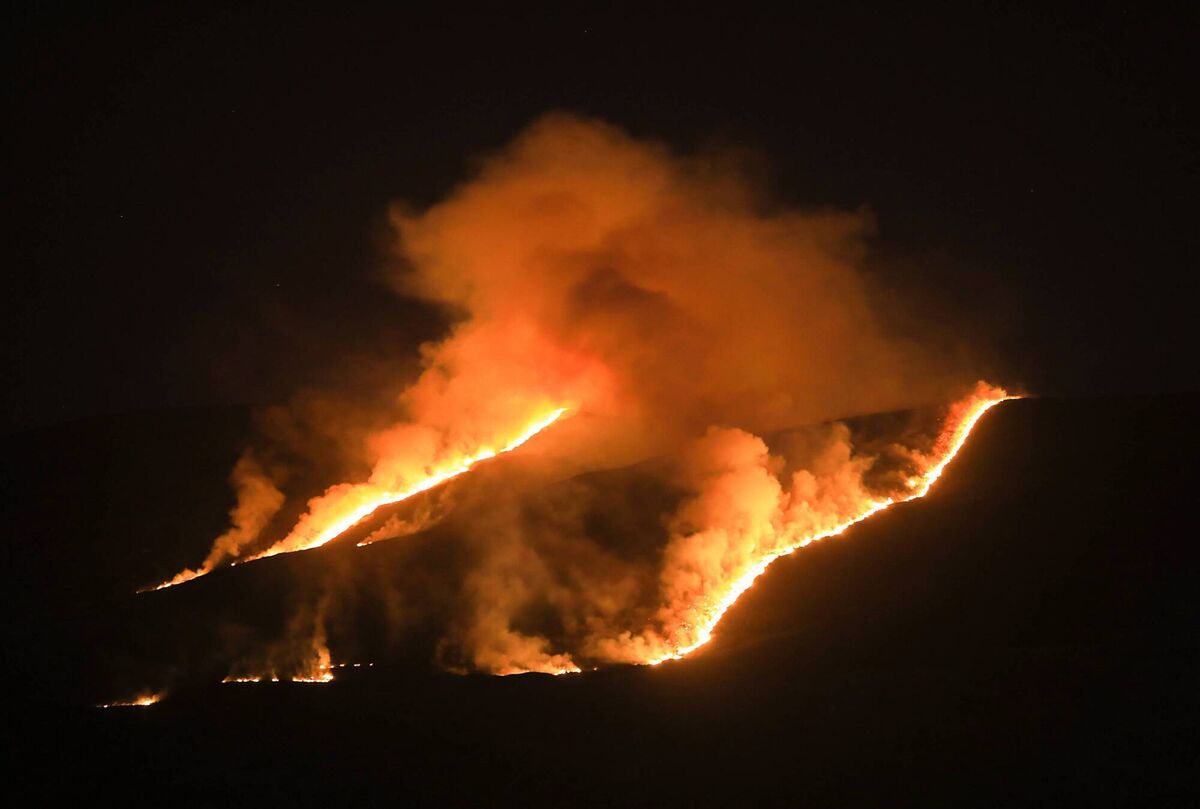
“More boots on the ground would certainly allow us to have more patrols over longer hours. It would be welcome,” he said.
“But resources are needed across the whole service, not just in Killarney National Park.”
He called for heightened public awareness about the dangers of using any naked flames outdoors.
“Lighting fires anywhere outdoors is a risk,” Mr Hassett said.
“Uplands, sand dunes, lakeshores, fire can do irreparable damage
in a short time in any of these places.”
Dry weather, dry, easterly winds and no dew at night all kept the fire burning.
But heavy rain now could cause further problems, with a downpour potentially washing ash into the water causing a carbon spike. Burned roots could leave unstable soil which could quickly erode and slip.
“You’d be hoping for moderate rain but not heavy deluge,” he said.
“Locally, I would like to commend and thank everyone who put their shoulder to the wheel. Those who worked and volunteered, Killarney Water Rescue, the Civil Defence, Meitheal Mountain Rescue, all our own staff, neighbours who made their land available to land helicopters, people who came forward and volunteered, the Army Air Wing, private helicopters. The community really came together to protect this national resource.”
‘The people’s park’
Local freelance photographer Valerie O’Sullivan rushed to the scene on Saturday morning after receiving photos from friends of the famous Eagle’s Nest site in the park burning.
Her photos have documented the devastation in one of Ireland’s finest natural assets, letting people all over Ireland and the world see the impact a fire can have, wiping out in mere hours ecosystems that took hundreds of years to evolve.
As she stood in the park with her camera and drone this week, occasionally coughing from smoke inhalation, people came up, shell shocked and distressed.
“I heard it was like hell on earth with all the animals,” one woman said through tears.
Ms O’Sullivan said: “Everyone here has an interest in the park. It’s deep-rooted in all of us.
“Real Killarney people know the park inch by inch.
“We consider it our own but it’s the people’s park.
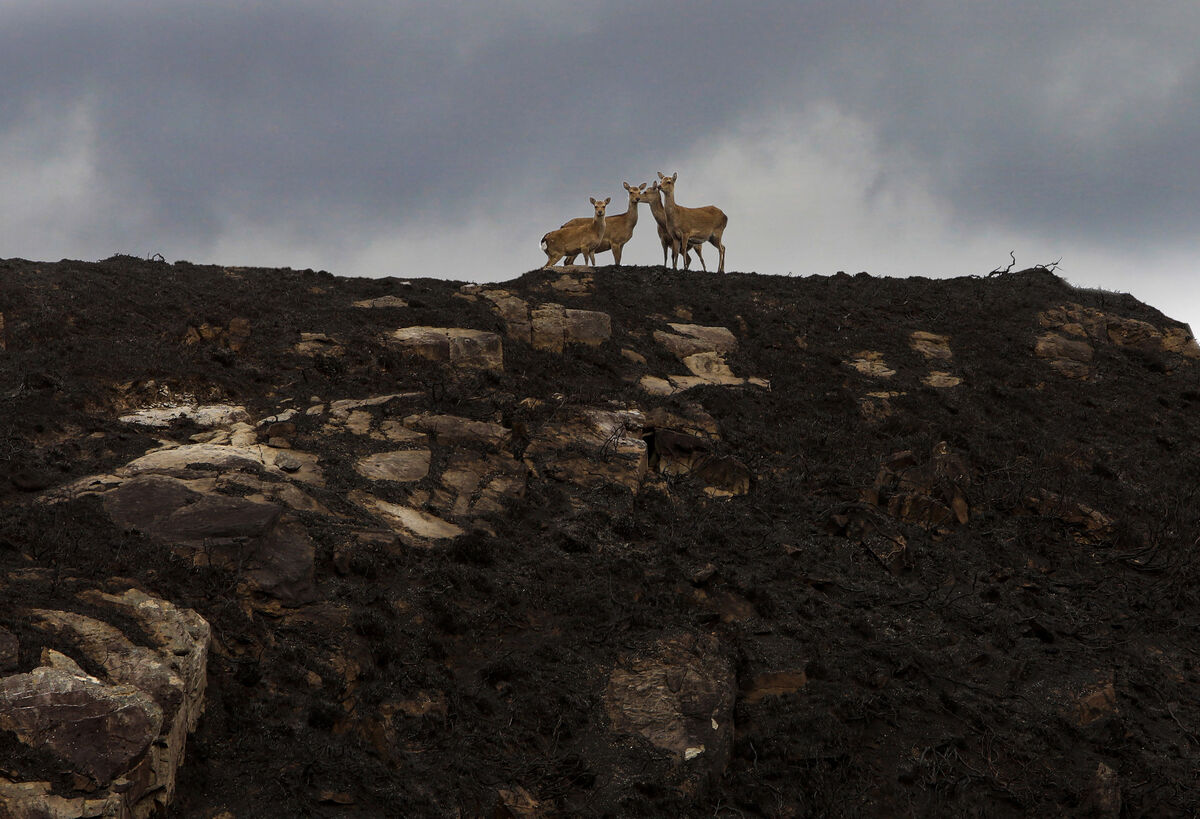
“Its last owner said that he wanted the park to be “a playground for the world.’ And the park rangers are real community people. People know the park rangers like their community gardaí.
“People’s love of the park runs deep.
“We watch it season by season. People ask each other if they saw the latest sunset there, or if they have heard the cuckoo yet this spring.
“During lockdown one, we told each other that we must be the luckiest people on earth, even when we had the 2km travel limit we could still come here.
“It’s an incredible resource to have. It has to be looked after, we’d like to see it adequately staffed and have adequate funding.”
She said that the Scairbhín (Scaraveen), an easterly wind that usually comes around the same time as the cuckoo in April and May, unfortunately, intensified the fire and helped it spread.
But there were some things to be very grateful for too, she said. No humans were killed or injured in the fires.
And most of the pregnant deer had not yet given birth. Young fawns are left in the undergrowth while their mother’s feed, and these baby animals would have been ravaged by the fire had it struck weeks later, she said.
The fire also licked close to houses, a school and a church in the Black Valley and one elderly woman was evacuated. But thanks to determined work of firefighters, no homes there were destroyed.
“The finest people live there. Real salt-of-the-earth, gorgeous people. The area’s already threatened by rural depopulation, I would hate to see it ravaged by fire,” Ms O’Sullivan said.
Despite the devastation, people still flooded to the park in the days following the fire. One angler didn’t even look up when a helicopter swooped down below him with a giant Bambi bucket to scoop water from the lake and toss at the smoking land.
And people’s sense of humour remained intact.
“We joked that there’d be fried salmon going on the mountain with all the lake water being emptied up there,” Ms O’Sullivan said with a smile.
But the situation is serious and the people of Killarney are still angry, she said.
“People are angry now, and upset, but we have lessons to learn now. Hopefully, it will never happen again.
“This national park needs to be protected so it can still be here in 1,000 years time.
“The lads from the fire service and the park rangers worked all day and all night, they prevented a lot of damage. We owe them a debt of gratitude.”
‘We did our best’
Paudie Mangan, station officer with Killarney Fire Brigade, said he and his team have not seen a fire of such scale and ferocity before.
“It’s been a tough few days,” he said. “We’ve been out there since Friday night trying to put a stop to it.
“We did our best. We kept the fire out of a lot of the woods.”
Firefighters also kept the fire out of homes in the Black Valley, fighting the blaze which came just 10m away from the local school.
“We think the fire started in the Dinas area. That’s where we first mobilised on Friday night at 11.40pm.
“Strong winds quickly escalated the fire. It went west towards Long Range River, jumped the river and went up to Eagle’s Nest, over Purple Mountain and Sheehy Mountain and down the Black Valley.
“It would take 30 minutes to drive from Dinas to the Black Valley by road. It’s a big area. It burned the
full length and breadth of that area. I’ve never seen anything this bad before.”
Crew safety was a concern as firefighters had to take boats across the lake to fight fire in heavy overgrowth on isolated islands.
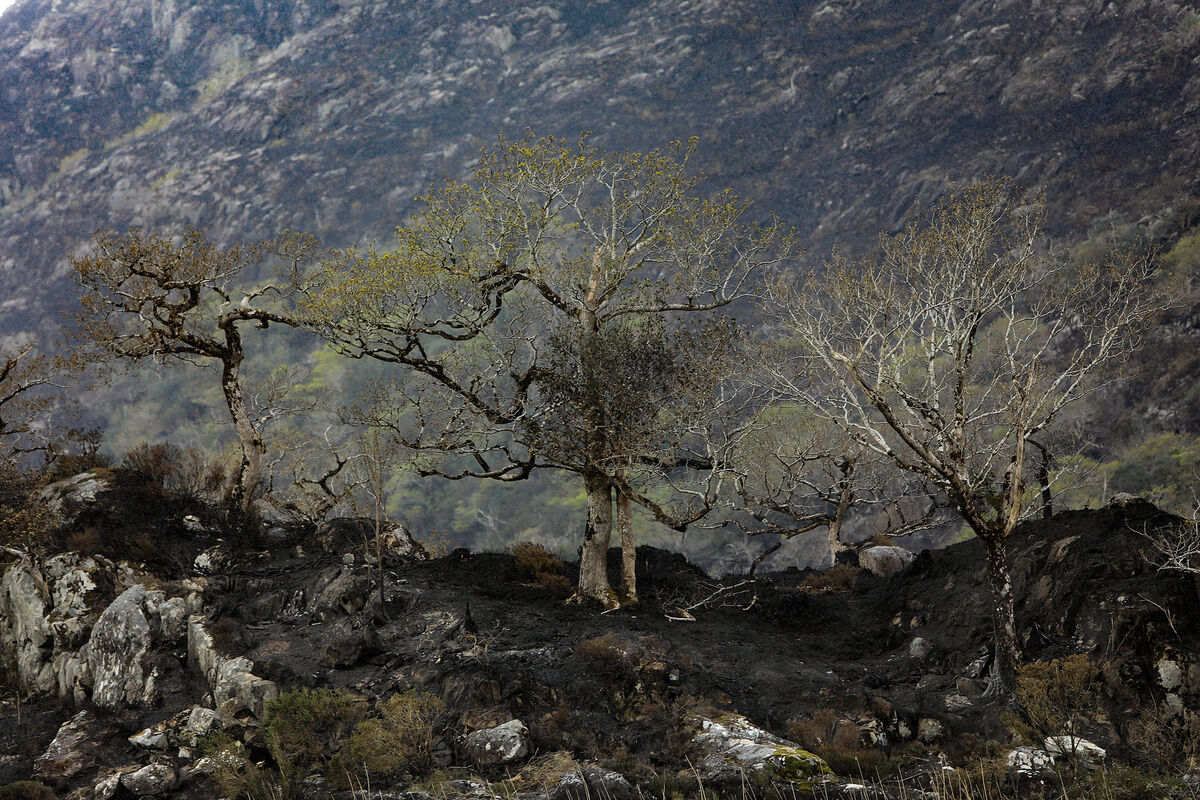
And as some of the terrain is “pure peat”, the bogs may remain smouldering for weeks.
Killarney fire crews stayed on duty for exhausting hours, working straight through from 4.30pm Friday to 1am on Sunday. They were up again at 8am and worked until 3am on Monday before returning again at 7am, he said.
Up to 40 firefighters battled the blaze, with the Killarney station assisted by crews from Sneem, Kenmare, Killorglin, and Macroom.
Fighting the fire from the air was also crucial as much of the terrain was inaccessible by foot or with machinery.
Army and private helicopters came to help, scooping large orange Bambi buckets into the nearby lake and quenching the flames on the scorched earth above.
“If the roof blew off the house once I got to bed I wouldn’t have woken,” Mr Mangan said with a laugh.
He warned people against lighting barbecues or using any naked flames in the national park or any areas where combustible material could be nearby.
“Everything is so crisp and dry at the moment, just one little spark can cause the most terrible destruction,” Mr Mangan said.
“We can self-destruct if we’re not careful. Even a discarded cigarette butt can cause serious damage.”
CONNECT WITH US TODAY
Be the first to know the latest news and updates





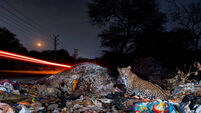



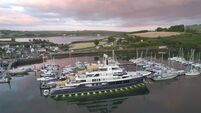
![Johnny_Stephens_Photography-02-425A6831-Edit[1].jpg Restaurant review: The Ivy Asia is an assault on all five senses — I hated it](/cms_media/module_img/9752/4876311_6_teasersmall_Johnny_Stephens_Photography-02-425A6831-Edit_5b1_5d.jpg)
